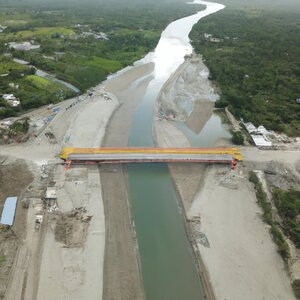-
 Retrouver dansMembres
Retrouver dansMembres Retrouver dansVidéos
Retrouver dansVidéos Retrouver dansChaînes
Retrouver dansChaînes
This website uses cookies to ensure you get the best experience on our website.
To learn more about our privacy policy Cliquez iciPréférence de confidentialité
- Mots clés - #infrastructure
-
- Dernière mise à jour 31 mars 2023 0 commentaire , 510 vues, 0 comme
- Philippines - Obtenir des directions
More from Alejandro Martinez
More in Politics
Related Blogs
Exploring Recent Infrastructure Development in the Philippines
Corps

The Philippines has been making significant strides in its infrastructure development in recent years, with several projects underway aimed at improving the country's transportation, communication, and energy networks. These developments are not only vital for the country's economic growth but also for its citizens' overall quality of life.
One of the most significant projects in infrastructure in the Philippines is the North-South Commuter Railway (NSCR), a 147-kilometer rail transit system that will connect the northern and southern parts of Metro Manila. The NSCR project aims to provide commuters with a reliable, fast, and efficient mode of transportation that will help reduce traffic congestion in the capital city. The project is funded by a $940 million loan from the Asian Development Bank and is expected to be completed by 2025.
Another major infrastructure development project is the rehabilitation of Manila Bay, one of the country's most polluted bodies of water. The project involves the cleanup of garbage, the installation of sewage treatment plants, and the establishment of a coastal greenbelt to help protect the bay's marine ecosystem. The project is expected to benefit millions of people in the Manila Bay area and is part of the government's commitment to sustainable development.
The Philippine government has also unveiled plans to build a new, sustainable city in the Clark Freeport Zone called New Clark City. The city will be designed to accommodate up to 1.2 million residents and will feature modern infrastructure, including high-speed trains and an airport. The project is expected to create jobs and boost economic growth in the region.
The Subic-Clark Cargo Railway is another significant infrastructure development project in the Philippines. The 71-kilometer railway will connect the Subic Bay Freeport Zone and the Clark Freeport Zone and is expected to boost trade and commerce in the region while helping to decongest Metro Manila's ports.
Finally, the Philippine government is expanding the Davao International Airport to accommodate more flights and passengers. The expansion project includes the construction of a new passenger terminal building and the lengthening of the airport's runway. The project is expected to improve air connectivity in Mindanao and boost tourism in the region.
In conclusion, the Philippines is making impressive strides in its infrastructure development, with significant projects underway aimed at improving transportation, communication, and energy networks. These developments are expected to benefit the country's economy, create jobs, and improve the overall quality of life for its citizens. As the country continues to invest in infrastructure, it is well on its way to achieving sustainable and inclusive development.
Photos
Carte
-
Emplacements sur MyWorldGo
Information de Lieu
- Emplacement: Philippines - Obtenir des directions
- Adresse formatée: Philippines
- Pays: Philippines







commentaires